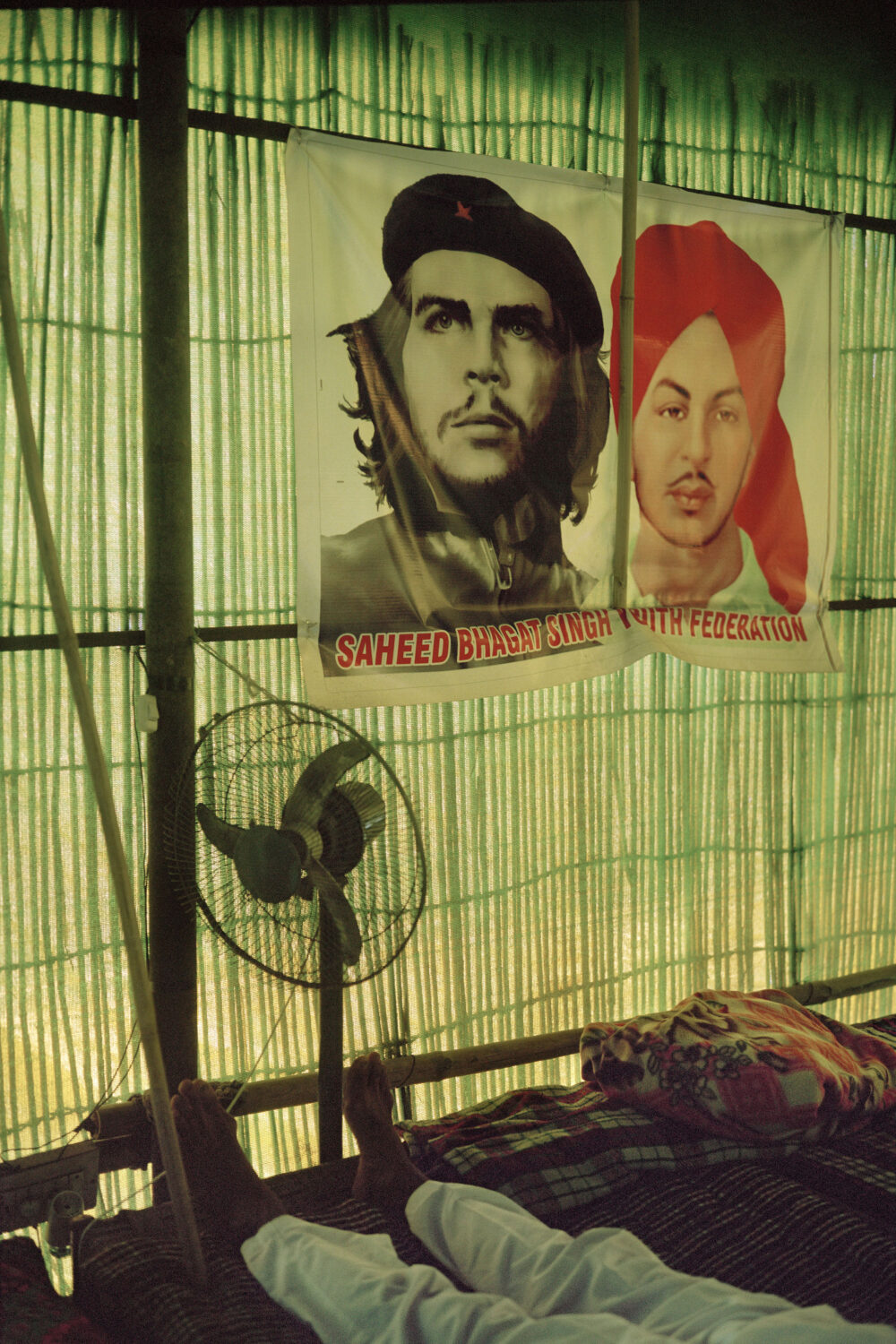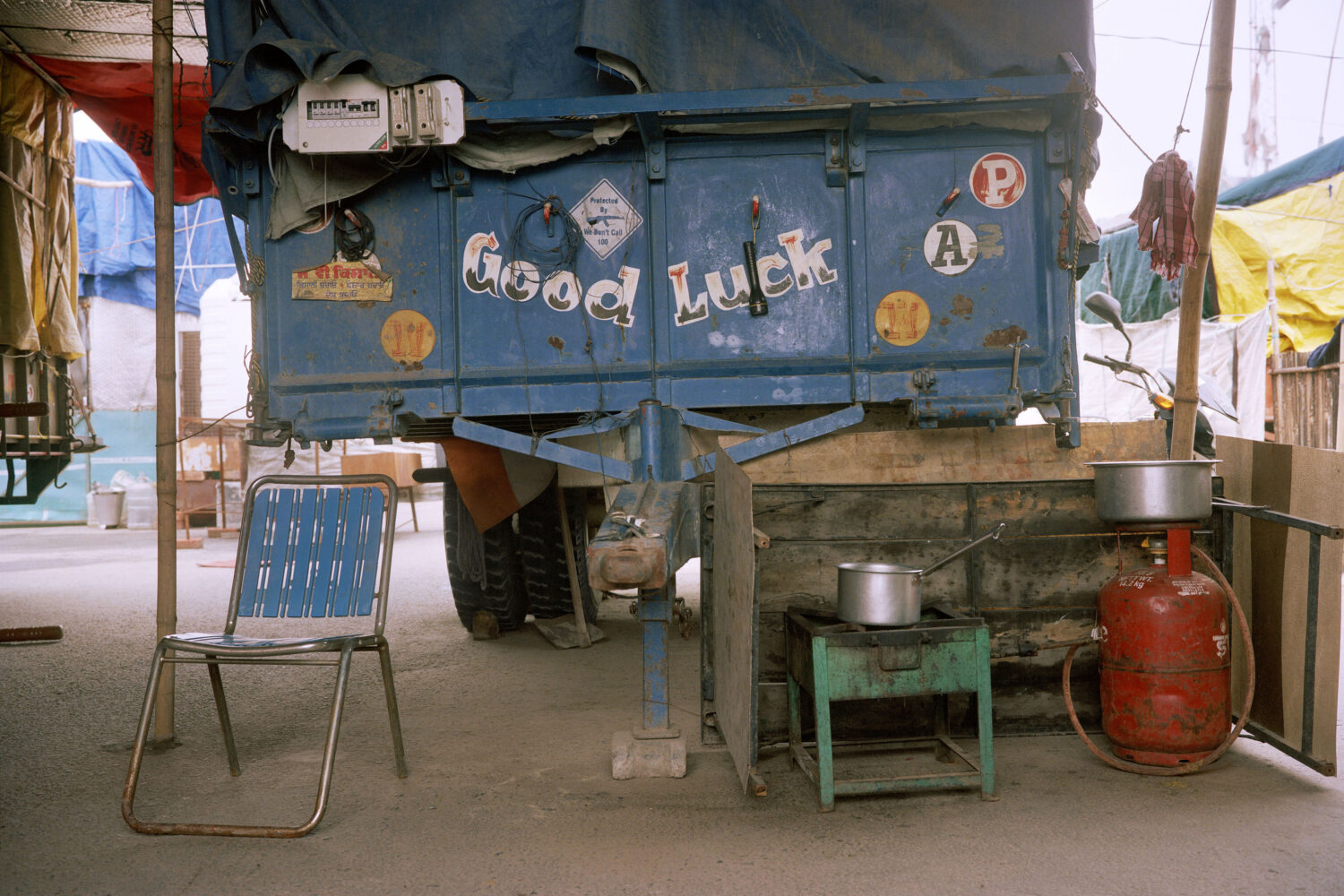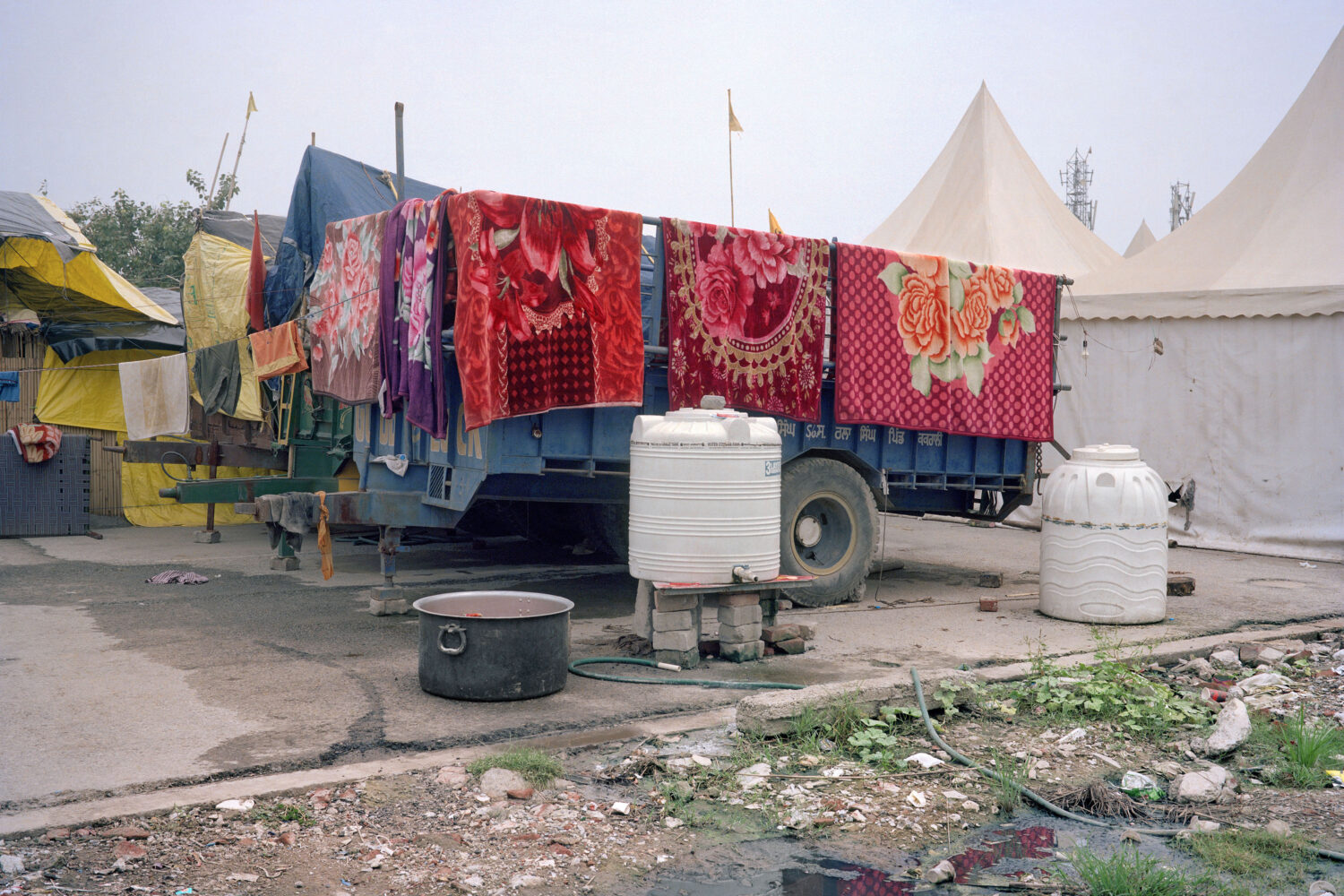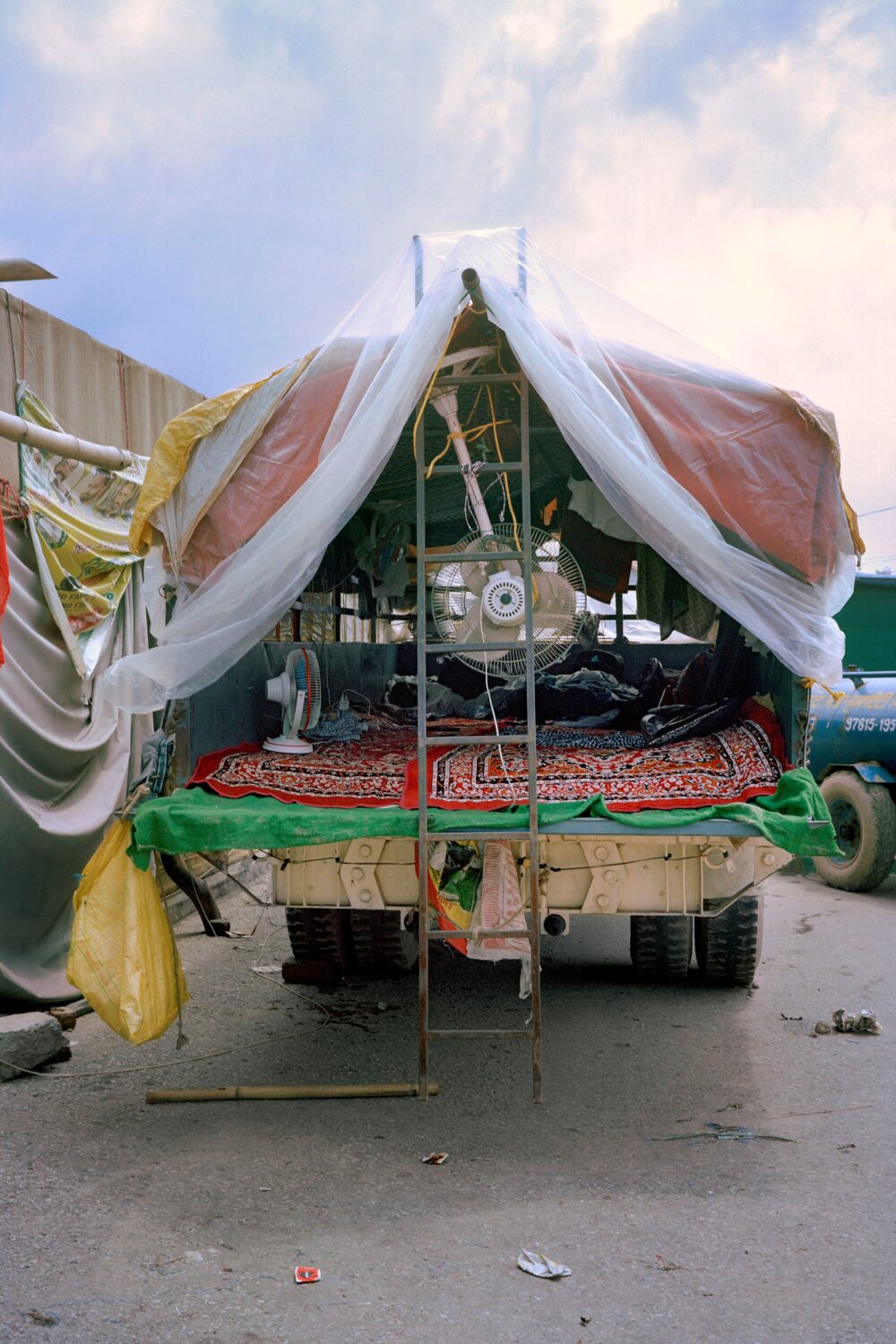“I Have Been Moved to Find Beauty in Places of Deep Precarity”: In Conversation with Gauri Gill
By Keshav AnandOne of India’s most important contemporary photographers, Gauri Gill is renowned for her deeply immersive and collaborative approach to image-making. Gill’s work is shaped by long-term engagements with rural, indigenous, marginalised and diasporic Indian communities. Through sustained interactions, she captures narratives of resilience, resistance and beauty, offering an intimate perspective on lives often overlooked. Her photographs sensitively examine the intersections of gender, caste, class and community, revealing the social structures that shape individual and collective agency. In her latest solo exhibition, The Village on the Highway, New Delhi’s Vadehra Art Gallery presents the most comprehensive showcase of this series to date. Opening today, 4 February 2025, as part of Defence Colony Gallery Night, the exhibition marks the first time this body of work is being shown in India. Ahead of the show’s opening, Something Curated’s Keshav Anand spoke with Gill.

Keshav Anand: How does it feel to bring The Village on the Highway back to India for its most extensive exhibition yet?
Gauri Gill: For me, showing in India, and New Delhi—the city where I live and this work was made—matters deeply. I am constantly moved and affected by my country, and of course the work is understood here in a way it cannot be elsewhere. The political and cultural details and nuances don’t need to be explained. However, I say this with two caveats. For one, there are huge chasms within India itself, including the gap between the globalised urban and the increasingly decimated rural. And when I show outside of India, there is a greater awareness of broader photographic histories and the canon itself, which has been inward looking and Western dominated but is finally beginning to open up to other ways of being and understandings.
KA: “Active listening” is a process you’ve referred to before when speaking about your practice—I wonder if you could elaborate on this way of working?
GG: I see my role as a kind of conduit. The fact is that any situation I may find or place myself in, involves a vast number of players and processes. And my job as I see it is to be sensitive, curious and open to what is already there. It is more about trying to get out of the way in order to listen acutely to what is subtle or unsaid—or unsayable—and usually at the margins outside dominant discourses of power. I do intervene in the artistic choices I make at every stage, and that is the active part, but the attempt is to try and do that in as light and transparent and playful a manner as possible, and using explicit and implicit collaborations to engage multiple voices, as well as improvisation. The ‘I’ itself is only contingent and relational.

KA: Architectures of resistance—and to an extent, the creativity urgency breeds—are central areas of focus in this series. What was the most challenging aspect of documenting the farmers’ temporary living quarters?
GG: Through my working life, I have been moved to find beauty in places of deep precarity—not just urgency—and profound injustice. Here, I have tried to record the way ephemeral and novel structures manifested in order to help powerless farmers stand their ground. I was not seeing this in other pictures of the protest, though there were so many fine ones. So I went in with a big and slow film camera which involved waiting around to document these physical structures, without people, whom I did not wish to endanger either. I never felt challenged in the way that the protestors were, in fact I was constantly energised after witnessing their determined optimism and flow of generosity, which included feeding everyone including the police in their temporary communal kitchens, opening medical camps to serve all who needed assistance, etc. It was good to be reminded of how feet on the ground can move things in a way that social media and online battles cannot.
KA: What role does empathy play in your work?
GG: As a human, empathy is fundamental. Being me—being sentient—involves suffering, just as it does for all other beings. Empathy collapses distance and hierarchies, and forms the eyes through which artists see the world.

KA: You work in both black and white and colour photography. How do you decide which best suits a particular project?
GG: The formal decisions are initially instinctive and later considered, but generally driven by the work itself. So as regards colour, say with Notes from the Desert, I wished to turn away from the brightly coloured photographs of Rajasthan made by neo colonial photographers who were focussing on what they saw as an ‘exotic’ place. Conversely, I was more interested in the emotional register, in the people who are my friends, as well as the shimmering mirage like heat and light of the desert and the conditions that geography imposes on humans. I wished to emphasise the fragility and austerity of what I saw, so I chose black and white film. With The Americans, which is about Indian immigrants in the USA, I wanted to focus on the materiality of culture which comes through objects, clothing, architecture, light, how immigrants might stand out in a new country and what they might miss about their homeland. With The Village on the Highway, again, it’s very much about what was built by the farmers on the site, the self-created speaking structures that in turn became their hosts, so maintaining fidelity to materiality was very important.
KA: Over the years, you have opted to exhibit outside traditional art venues, from public libraries to rural schools. Why is this important to you?
GG: Disseminating the work among the communities where it has been made is of vital importance and also forms a kind of feedback loop. These sites serve as both backdrop as well as audience for the pictures—it’s actually very organic and natural.

KA: Acts of Appearance is one of my favourite photographic series of all time. I’m curious to learn more about how you navigate the dynamic between your authorship and the collaborative nature of your work.
GG: All of my work involves collaboration to a greater or lesser degree. Acts of Appearance was most akin to shooting a theatrical film, where I was a kind of director constantly taking direction from all the actors and local bystanders! There was a lot of improv and play involved in the process. And of course the masks formed a fundamental intervention. But in the end I maintained authorship because I took the final artistic decisions as regards the photographs. Conversely, the papier-mâché artists would be the authors of the commissioned masks. With Fields of Sight, on the other hand, Rajesh Vangad and I are co-authors because we take all of the artistic decision jointly.
KA: Changing pace for a moment, aside from home, where do you like to eat in New Delhi?
GG: This is wintertime so I can recommend Café Lota at the Crafts Museum for its excellent saag and makki ki roti with black carrot gajrela for dessert. I also love Sagar in Defence Colony for my dosa fix and Bengali Market for golgappas and papri chaat.
KA: And what are you currently reading?
GG: I am studying the great Madhyamaka text, Illuminating the Intent: An Exposition of Chandrakriti’s Entering the Middle Way by Lama Tsong Khapa, translated by Dr Thupten Jinpa. And a book of recent fiction about contemporary India that is still alive in my head is Quarterlife, by Devika Rege.
Feature image: Gauri Gill, from the series The Village on the Highway, 2021. © Gauri Gill. Courtesy the artist and Vadehra Art Gallery